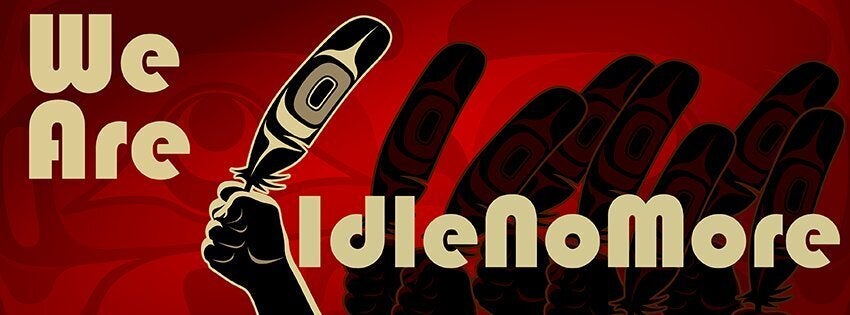With all the attention paid to the Idle No More movement and the off-again on-again talks between some native chiefs and the Prime Minister, one basic fact about aboriginal life in Canada has been forgotten: most aboriginals do not live on reserve and seem to be better for it.
That's an important fact that should be part of any debate about how to improve the living standards of aboriginal Canadians.
Their general plight is already well-known: when compared to other Canadians, Statistics Canada data shows that proportionately fewer aboriginal Canadians finish high school and of those that do, a smaller proportion will obtain post-secondary education. Also, aboriginals are less likely to be in the labour force, they will face higher unemployment rates, and their median earnings are less. They are thus more dependent on government transfers when compared with non-aboriginal Canadians.
However, what is less often articulated in much detail is how those aboriginals off-reserve fare better than those Aboriginals on-reserve.
To see what I mean, some background is necessary to put that claim in context.
According to Statistics Canada, for census purposes, "aboriginal identity" refers to people who self-identify as belonging to one or more of the following aboriginal groups: North American Indian, Métis or Inuit. According to the 2006 census (the 2011 results are not yet available) 1,172,790 Canadians placed themselves in one of those three groups or some combination thereof.
Here's the thing: of those almost 1.2 million aboriginals, just 308,490 live on reserve, or barely more than 26 per cent. Thus, fully 74 per cent of Canadians who self-identify as aboriginals do not live on reserve.
Yes, populations on reserves have increased, partly because the population of self-identified "North American Indians" is growing. But as the statistics show, a greater proportion of that category of Canadians lived off-reserve in 2006 when compared to 2001. In other words, the off-reserve population is growing faster than the population on reserve.
Looking more closely, the aboriginals most likely to live on reserve are "North American Indians" or First Nations in more common parlance. Of that group, 300,755 out of 698,025 live on-reserve, or 43 per cent (again, as of the 2006 census).
In other words, 57 per cent of Indians/First Nations people do not live on reserve. And that's up from 55 per cent who lived off-reserve, as of the 2001 census.
A caveat: Census data differs from that recorded by the department of Aboriginal Affairs for reasons not germane here. But Aboriginal Affairs data shows a similar pattern in its 1983 to 2010 tracking: a growth in the number of people on reserves but a decline in the proportion of registered Indians on reserve.
So why does all this matter? Because additional data from Statistics Canada reveals that those most likely to live on-reserves (the "North American Indian" category), have lower median incomes compared to other aboriginals.
For example, according to the 2006 census, for all aboriginals grouped together (whether on or off-reserve), the median earnings figure for someone who worked full-time was $36,944.
But what is revealing is how that aboriginal category breaks down. Inuit had the highest median income at $44,440 with Metis next at $39,784. Indian/First Nations people (combining on-reserve and off-reserve) had a median income of just $34,209.
Remember, all of the foregoing statistics are for those who worked full-time all year.
Now break the "Indian" category down even further between those on-reserve and those off-reserve.
On-reserve Indians had a median income of $29,014. In contrast, off-reserve Indians had a median income of $37,477. In other words, First Nations people/Indians who live off-reserve have a median income that is almost $8,500 higher than their counterparts on-reserve.
It's no secret as to why many reserves and the inhabitants thereon suffer: many are far from large urban centres. Most reserves are also not yet designed to foment any sort of property rights for inhabitants.
The combination of remoteness and anti-wealth creating collective structures (to say nothing of the politicization of reserve spending) means many reserves thus lack the economic, educational and career opportunities that accompany living near a major centre.
As native and non-native politicians alike ponder what to do about aboriginal policy, they should keep in mind this simple fact: For most of Canada's aboriginal population, life is better away from the reserve. That might explain why a majority of aboriginal Canadians, including a majority of North American Indians, choose not to live on reserves.
